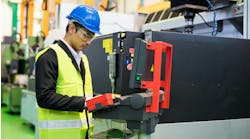Technology investments in the industrial and manufacturing sector are set to skyrocket, jumping from US $59 billion in 2019 to US $375 billion in 2030, according to a recent release from ABI Research.
"The transformative shift toward Industry 4.0 technologies and the broader field of software-defined manufacturing (SDM) presents a massive opportunity for a wide range of technology providers and implementers,” says Ryan Martin, ABI principal analyst.
Intelligently connected hardware represents the largest share of revenue, growing from US $200 billion in 2019 to US $800 billion in 2030, but will diminish in proportion as associated software and services take hold, per ABI's Digital Factory market data report. After hardware, data and analytic services is the fastest-growing segment in terms of revenue generation, reaching more than US $185 billion in 2030, up from US $11 billion in 2019. “As the amount of custom code required to deploy new solutions on the factory floor drops, data and analytic service revenue growth in smart manufacturing will accelerate,” Martin explains.
The leading industries driving these revenues overall include automotive, heavy machinery, food, beverage, tobacco products and electronics. And, though Industry 4.0 is a global phenomenon, roughly half of the global revenue opportunities will be concentrated in China and the United States, followed by Germany and Japan. Furthermore, the United States leads the way in most industries such as automotive, while China leads in machinery, nonmetallic mineral products, primary metals, and textiles, according to the report.
“There is a long and compelling list of digital transformation technologies and pilot projects that are now graduating to the factory floor. The companies and production environments embracing these opportunities have quickly seen the benefits and want to scale, rather than risk falling behind,” says Martin.




